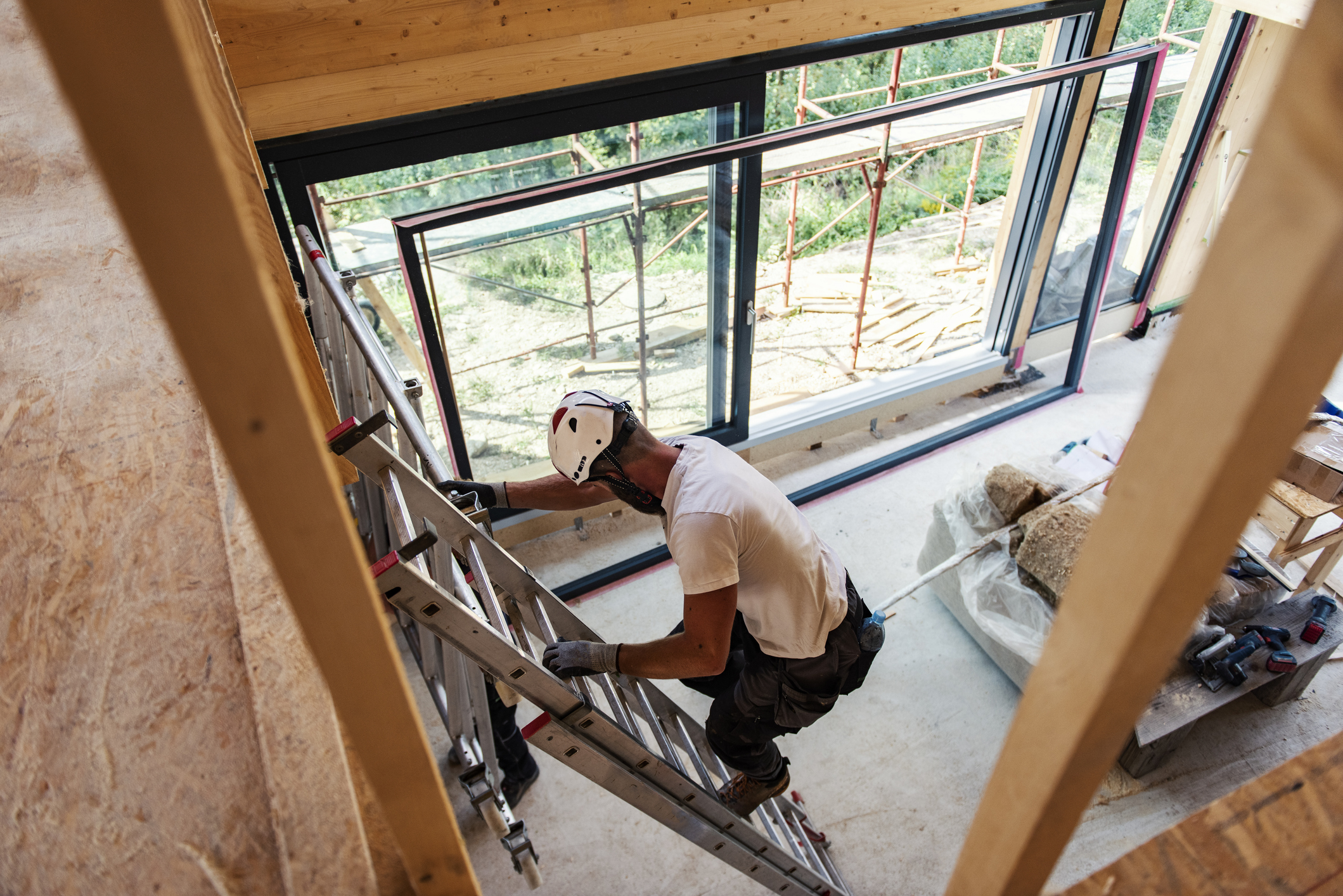5 Ladder Safety Tips to Take a Step in the Right Direction
It’s Ladder Safety Month! Nearly every business owns a ladder, but additional safety considerations are sometimes forgotten in organizational risk management efforts. We review safety tips that every industry can utilize.
March 26, 2024

Recent studies state that 81% of fall injuries involve the use of a ladder, and they are the leading cause of fatalities on construction sites. Proper setup, usage, and maintenance are necessary to prevent fall injuries, yet ladder safety remains the third most cited Occupational Safety and Health Administration (OSHA) violation.
“Nearly every industry uses a ladder to some degree, but it is particularly critical to consider specific needs for each to prevent incidents,” said Kevin O’Sadnick, Senior Risk Service Manager at Safety National. “For example, in construction, ensuring an extension ladder is available and long enough to adequately extend beyond the landing point is critical. In retail and warehouses, a platform-style ladder with standing room at the top could be particularly useful in preventing employees from utilizing the top rung of a standard ladder while also providing a more secure standing area.”
Many factors can adversely impact a ladder’s safety, but these five tips can help prevent known risks.
1. Pick the correct ladder for the job.
Many OSHA citations are a result of the wrong ladder being chosen for a project. When selecting a ladder, first consider the load-bearing capacity necessary based on the employee using the ladder and the additional equipment they will be carrying. Ladders are rated for specific uses, from heavy-duty commercial to light-duty household, and should be used accordingly.
2. Keep three points of contact at all times.
Employees should maintain three points of contact – two hands and a foot or two feet and a hand – while climbing and descending. Barricades should also be used to keep traffic away from the ladder. Additionally, the 4-to-1 rule should be applied; requiring that the ladder be one foot away from the wall for every four feet the ladder is raised.
3. Store ladders properly and inspect regularly.
The best way to keep ladders in proper working order is to ensure they are correctly stored. They should be protected from weather elements, and when stored horizontally, they should have consistent support to prevent sagging. When inspecting, workers should look for any loose pieces, dented rungs, bends and breaks, corrosion, and sharp edges or burrs. Repair and maintenance should be scheduled regularly to prevent further damage.
4. Train employees on proper usage.
Workers should be trained on usage and maintenance during initial onboarding, but practical demonstrations, safety videos, and group exercises can reinforce these principles. A critical piece of any training discusses height requirements, such as fixed ladders above 24 feet needing fall protection. Musculoskeletal disorders can also be a risk for employees lifting ladders on or off trucks. Heavier ladders can be assisted with a hydraulic lift.
5. Clear the area around the base of the ladder.
The surrounding surface of any ladder should be clear of obstructions and level with the ground. Many job sites have uneven surfaces, requiring another access point for a ladder.
For more expertise, guidance or resources on this topic, please contact [email protected].

























